29 Jun 2017
0 CommentsCanada at 150 – What is Your Gift to Canada and the World?
As we approach Canada Day of our 150th year of Confederation, I am compelled to share my personal reflections on where our country is headed, how the lessons of history (positive or negative) are shaping our future journey and the contribution we, as Canadians, can make to our world. Beyond celebration, our nation urgently needs our care and attention. As a result, I am sharing my own journey in the form of a call to action.
Over four years ago, I received a call join a group helping to build programs to shape our Canadian sense as a “Smart and Caring Nation”, inspired by His Excellency Governor General David Johnston. My love of our country has been inexorably shaped and enhanced through extended periods of living and working abroad. The opportunity to serve Canada and to collaborate with an unbelievably talented group of leaders, made it a no-brainer for me to accept this call. Since then, in many varied groupings, conversations about Canada and nation-building were convened at Banff Centre for Arts and Creativity, the Deloitte Greenhouse, Wasan Island and more. Although not apparent from the core group shown below, a diverse and impactful group of individual leaders, first nations, national and local institutions, and many change makers from the charitable and NGO sector coalesced to help shape and expand this initiative. I am eternally thankful for the leadership of David Johnston and Community Foundations of Canada, for their leadership in starting these conversations. My investment of time and money has been returned many times over in my own knowledge and engagement.
 Those early conversations helped to architect and propel grassroots activities around Canada 150 at a time when our federal government hadn’t yet climbed onboard the “150 bandwagon”. Although our path was initially unclear, and the group moving in several directions, eventually it became clear that the combination of passionate people inspired by a visionary challenge to create a “Smart and Caring Nation” unleashed many amazing initiatives. Some of the key Canada 150 themes started to emerge:
Those early conversations helped to architect and propel grassroots activities around Canada 150 at a time when our federal government hadn’t yet climbed onboard the “150 bandwagon”. Although our path was initially unclear, and the group moving in several directions, eventually it became clear that the combination of passionate people inspired by a visionary challenge to create a “Smart and Caring Nation” unleashed many amazing initiatives. Some of the key Canada 150 themes started to emerge:
- Youth Engagement – Millennials (and now, Generation Z) are the best educated generation of Canadians who are passionate and “issues”-driven, yet often fail to engage with the formal political process. Canada 150 is a great way to harness that energy and enthusiasm to shape our governance for the next generation.
- Reconciliation with our Indigenous People – Canada has a sad record in our treatment of Indigenous People whose territory European settlers colonized and, without whom, our modern country would not have been built. The December 2015 Truth and Reconciliation Commission Report chaired by Chief Justice Murray Sinclair, painted a shocking portrait of the misguided and brutal “Indian Residential School System” previously almost unknown to most Canadians, even many in the First Nations community. Although Canada’s 150th birthday strikes a dissonant chord for many Indigenous people, it remains a unique opportunity to learn from past mistakes and to start building a better future together. In spite of the challenges raised by celebrating years of neglect and mis-treatment, I can only hope that we can find a way forward to a brighter future for all (Indigenous and non-indigenous) people in Canada.
- Diversity and Inclusion has become of paramount importance in our increasingly diverse country. Ensuring that everyone “belongs” and can contribute to our common future, is a key priority. Furthermore, we must arrest our growing Inequality before it unleashes the destructive and divisive social forces we see in other countries.
- Environmental Challenges – for many, particularly the youth, Climate Change and other environmental challenges caused by the impact of humanity on a finite planet, have gone from theoretical to becoming an “existential” crisis threatening our future wellbeing. I continue to work with others to explore ways to address what seems to be an intractable problem, not just at a government policy level but even more importantly at the grassroots level to engage ordinary Canadians.
Once these high level priorities were identified, many participants contributed to shaping thinking, leading to great initiatives such as the Alliance 150 to increase collaboration and partnership among organizations. And, as Federal and Provincial governments got onboard, these earlier efforts were foundational, setting the agenda for much of the current governmental and NGO work for Canada’s 150th. As we closed in on 2017, I channelled my focus to advising a number of national Canada 150 Signature Initiatives, such as Canada C3 and Canada 150 in our local communities, that directly descends from those early conversations.
As an Ambassador for the Canada C3 expedition, I am excited to see this project’s ambitions surpassed on all its major themes of Reconciliation, Youth Engagement, Inclusion & Diversity and Environmental Stewardship. Watch this nation building exercise grow during the Expedition as it reaches the majority of Canadians. I will use my time on Leg 7 of Canada C3, later this summer, to learn, engage and reflect collaboratively regarding our major Canadian challenges and opportunities.
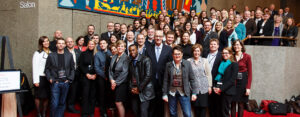
My biggest take away from this process, is that it is important for Canadians, individually and collectively, to work on nation building. Unsurprisingly, David Johnston said it best in a letter “What Will Your Gift Be?”, from his recent book The Idea of Canada – Letters to a Nation. Note that the proceeds from this wise work are directed to building the Rideau Hall Foundation which is another legacy of our current Governor General. In that letter:
“Each Canadian has the power within him or her to give something special to our country and help build that country we dream of. Big or small, complex or simple — it doesn’t matter what Canadians give. The gift each Canadian chooses is as unique as the person who shares that fit. .. young people in our country have a special responsibility to lead our country’s celebration of the 150th anniversary of Confederation.”
People around the world look to Canada as a bastion of democracy, decency and safety, buttressed by our reputation for being obsessively obsequious and our pioneering of international peacekeeping. As times change, our national role and aspirations also need to change. Just as we are no longer the extension to Victorian Great Britain of a 100 years ago, our post World War II Cold War era identity also needs to be re-imagined. What will Canada look like for our bicentennial in 2067? 2017 represents a unique and timely opportunity for us to all participate in shaping our common future.
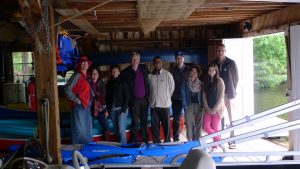
In 2017, man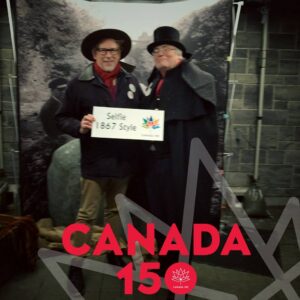
A country is, indeed, the product of the collective hopes, dreams and ideals of its citizens. As John F Kennedy famously said,
“Ask not what your country can do for you. Ask what you can do for your country.
Yet, sometimes our daily news feeds chronicle the disturbing forces that appear to denigrate all that Canadians hold dear, such as:
- a new move to put “drawbridges up”, instead of embracing the global world order,
- a pervasive failure to question “fake news”, “alternate facts” and dismissal of reasoned analysis rather than encouragement of intelligent debate and problem solving, and
- a shift in political discourse from a “narrative of hope”, to one that lacks civility, grace or higher purpose.
The more I travel and engage with global thought leaders, I learn that Canada is becoming the last bastion of a better way in the world. As a result, I believe those key Canada 150 themes of Reconciliation; Inclusion; Youth Engagement and Environmental Stewardship have escalated in importance from nice to have to social imperatives.
For individual Canadians, using 2017 as a springboard towards a “Smart and Caring” Nation in 2067, there are innumerable ways to make a difference with some combination of the trinity of “wealth“, “wisdom” and “work” focused on civic, social and cultural needs:
- Volunteering to give back through a cause is vitally important to you, whether in your neighbourhood, nationally or internationally. A great example is the CANADA150FOR150 Volunteer Challenge
- Donating to a cause that will help move the needle. Consider your local community first and your local Community Foundation may be a great place to start for new ideas and approaches, or
- If you identify an unmet need in our society, consider starting a new Social Enterprise
Besides being amongst the most fulfilling work you will do in your life, your civic engagement will continue to help shape and grow the wonderful social and cultural fabric of this wonderful country we call Canada.
I have been inspired to continually re-think my gift to Canada, and now see it more of a journey than a destination. Stay tuned …
What is your gift to Canada? Are you prepared to do your part?
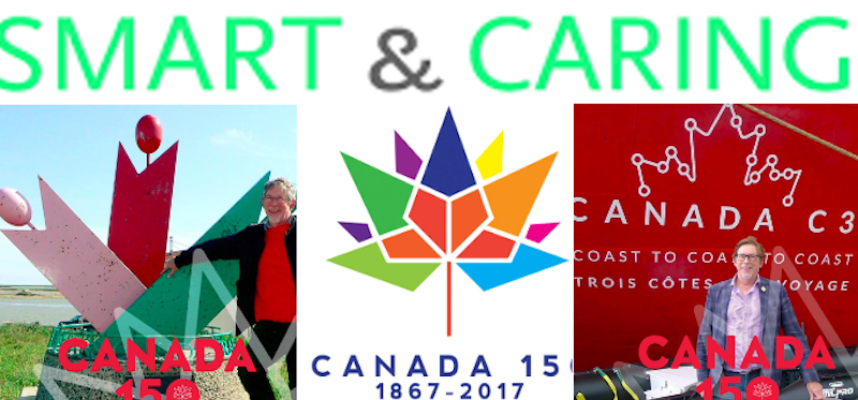
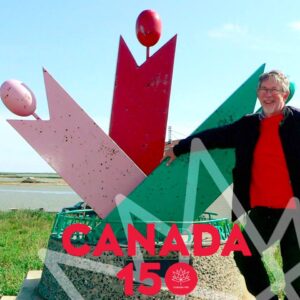
5 Dec 2017
0 CommentsCanada – A Nation Built by (Extra) Ordinary People
At our 150th birthday in 2017, Canada is at a crossroads as it strives to outgrow its colonial past, to find its rôle and place in a new world order and to respond to the recent Truth and Reconciliation Commission Report on the mis-treatment of our Indigenous Peoples in Residential Schools.
Compared to the celebration of our history that was the focus of Canada’s Centennial in 1967, Canada C3 responded directly to such challenges and sought to contribute to a new sense of nation building in our country. The ambitious goal was to engage over 20 million Canadians and contribute to a Legacy for our nation as it looks forward to our bicentennial in 2067 and beyond.
Accordingly, the key themes for Canada C3 were crafted to help in this nation building: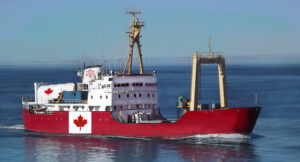
share, contribute and ultimately act to help us build a future civil society that is just and open.
To illustrate this, the ship had about 60 people onboard at any one time, as follows:
Through my posts, pictures, and videos, you will meet some of the above people, but my focus for this post will be in the communities we visited on our journey. Since it was impossible for each and every Canadian to participate, I hope these posts can help people share and savour even a small portion of what I experienced.
While the backdrop of our journey, the east coast of Baffin Island, represents some of the most spectacular scenery on our planet, it only provided the context for our discussions and learning. Make no mistake, for those who are connoisseurs of art from the Arctic, the sense of lighting and colours seems alien to our more southern eyes, yet addictively beautiful. Compare the colours and textures of the iconic Inuit Artist Jessie Ooonark, Group of Seven member Lawren Harris, and a Brit bewitched by the north Ted Harrison to the real thing:
In posts that will follow, I will focus more on the people onboardCanada C3. For this post, I thought I’d talk about people encounters in the two main communities we visited, first Iqaluit, and our terminus in Qikiqtarjuaq.
Our first activity as a group was lunch and a hike in Sylvia Grinnel Territorial Park, which introduced us to the unique foliage north of the tree line. The park also contains archaeological sites of the ancient Dorset and Thule peoples. While there, we met a very engaging young Inuk named Jenna, shown here hamming it up for the camera. She was with her family fishing near Sylvia Grinnel Falls.
I was chatting with fellow participant, Lorna Crozier, when Jenna approached us and offered to sing a song
I soon learned that this friendly engagement, even with strangers, is a common part of Inuit culture. When, expecting to learn about some local singer celebrity, I asked her what her favourite singer was, perhaps I shouldn’t have been surprised that she answered “Katie Perry”.
Later our group toured the Nunatta Sunakkutaangit Museum, in the former Hudson’s Bay Company store, travelling there by our trusty yellow school bus.
There I saw a man whole seemed interested in our group, so I stopped and chatted with him. The video below explains why the talented artist was in Iqaluit. Jenna, riding her bike, was in the background of this interview, but got removed in editing. Charlie “C5” Johnston was definitely worth interviewing and, was it synchronicity for a person who brands himself “C5” to meet and interact with the “C3” group?
Later in Iqaluit, we got to meet many local people, including the scientists at Nunavut Research Institute, local artists, and kayak building at the local high school.
Days later, at the end of Leg 7 in Qikiqtarjuaq, most of our group climbed the hill overlooking the hamlet and the Canada C3 vessel, and we had a number of amazing encounters.
Initially I was surprised that the girl, shown above with her sister, had such a pro camera. Later, I learned that a journal and fellow participant Caroline G Murphy, had sportingly lent her camera. For more background on this budding young photographer, read Caroline’s article in Le Journal de Montréal J’ai Prêté ma Caméra a une Jeune Inuite de 9 Ans …
And, for those unable to read in French, our discussions on Diversity and Inclusion did encompass the original “Two Solitudes” in Canada, namely French and English. While Google can do a great job translating the article, the photos with the eye of a precocious 9 year old totally transcend traditional cultural divides.
Our final community encounter during Leg 7 was at a ceremony in Qikiqtarjuaq where we gave hockey sticks to the local children, who seem to have a passion for hockey that transcends even southern Canada’s hockey crazy intensity. Leading the presentation was Jim Kyte, fellow participant and the first legally deaf NHL hockey player. Jim is an inspirational leader I was happy to get to know who has overcome challenges that most would shy away from. Today he serves as Dean of the School of Hospitality and Tourism at Algonquin College in Ottawa.
Jim was joined by last minute participant, David Lawson, an Inuk leader who just resigned after 15 years serving his community in the RCMP. I am sure we will hear much more from David who just started a law degree in order to better advocate for his people. For example, he is Board President of Embrace Life Council, an Iqaluit-based suicide prevention organization. In a separate post, I will write more about my journey of learning about the Inuit people and their journey to become a vital part of the fabric of our Canadian nation.
Canada C3 made for some wonderful encounters and conversations. I can only wish that every Canadian was able to share my experiences with the wonderful diversity that is Canada. Even I took a long time to process this life changing experience. In the end, I had my understanding of my own country transformed both by the special world that is Canada’s Arctic regions, but even more so by people who now have a life long bond that will lead to action. These conversations were far from superficial and already, many of us are taking action. As we enter 2018, you will start to learn more about the Canada C3 Legacy Programs which will keep the torch of this remarkable nation building alive and further spreading that light in the form of action and education.